Agile is an intelligent way to manage projects. It helps teams work better and adapt to changes fast. Sprint planning is a critical step in Agile.
Imagine a group planning to hike a mountain. Before they start, they look at the map. They decide how far they can go and what they’ll need. Sprint planning is similar. The team looks at the list of things to do, picks the most important ones, and plans to finish them quickly.
Sprint planning helps everyone understand what to work on. It makes sure the team knows what’s most important. It also helps them figure out how to do it together.
Let’s learn more about how it helps product teams succeed.
The purpose of sprint planning
Sprint planning helps you set goals and decide how to reach them. In Agile projects, this planning phase is essential. It helps teams focus on what’s most important for the next few weeks.
Key objectives in Agile projects:
- Set clear goals. A soccer team decides on its play before the game. A product team picks goals for its sprint. This keeps everyone on the same path.
- Choose tasks. Imagine picking ingredients for a recipe. Agile teams choose tasks that match their goals.
- Plan work. It’s like planning who does what in a group project. Teams determine who can do each task and how long it will take.
Example
Let’s say a team is building a new website. In sprint planning, they decide their next goal is to make the homepage look great. They pick tasks like designing a logo, writing welcome text, and coding the layout. Everyone knows what to do. Ultimately, they aim to have a homepage that draws people in.
Sprint planning turns big projects into smaller, doable steps. It’s about ensuring everyone knows the game plan and is ready to go. This way, teams can work better and make their projects a success.
Roles in sprint planning
Sprint planning is a team effort, but each member has a unique role. Let’s illustrate with our previous example – a group of people preparing to hike a mountain.
Product owners are the hike leaders. They map out the route (project goals) and ensure the team is aware of the destination’s value (customer needs). Their main task is to organize the journey’s steps (product backlog). They prioritize the most crucial paths to take first. This preparation guarantees that the team embarks on the most impactful trails during their expedition.
Scrum Masters are the navigators. They keep the group on pace (facilitate sprint planning) and help navigate through unexpected terrain (overcome obstacles). Their objective is to ensure a smooth journey. They provide guidance and support to keep the hike enjoyable and on track.
Team members are the hikers. They use their skills to traverse the path (complete the tasks). In sprint planning, they assess their capabilities and decide how far they can go and what equipment they’ll need. They commit to specific segments of the trail and prepare their packs for the sprint ahead.
These are the main “characters” involved in sprint planning. You could have more stakeholders though. Typically, larger teams or more complex projects involve more people.
Stakeholders include anyone with an interest in the project’s outcome. They provide feedback and input that guide the product’s development. Use a user feedback platform to track this feedback.
Integrators ensure that different components work together seamlessly.
Independent testers and auditors do quality assurance. They catch mistakes before the product reaches the client.
Technical and domain experts are brought in to advise on specific challenges. This ensures the project is technically sound and adheres to standards.
Architects ensure the solution fits within the enterprise structure. They facilitate architectural decision-making.
An Agile coach or mentor helps the entire organization adopt Agile practices. They offer guidance and mentorship to improve the Agile implementation process.
Sponsors support the project. They provide resources, manage large-scale risks, and ensure the project aligns with organizational goals.
These roles harmonize to create successful sprints. Each role is vital. Understanding these responsibilities can lead to more effective sprint planning and project execution.
Real-world example
It’s all good in theory. But how do real teams use Agile sprint planning?
Intel
Intel adopted Scrum to tackle various challenges:
- Waterfall culture
- Functional silos
- High turnover rates
What did they do?
Phase 1: Intel hired an external company for Scrum training and coaching
Phase 2: Scrum teams focused on debugging Scrum events and maintaining Scrum artifacts
Phase 3: Intel ran a pilot test on cross-functional teams. Focus: minimize handoffs and influence the organization’s leadership
Results:
- 66% reduction in cycle time
- Improved morale
- Increased transparency
Are you excited to start planning your sprint? Let’s lay down the groundwork first.
Preparing for sprint planning
Preparing for sprint planning is crucial for Agile project success. The team reviews and prioritizes the product backlog. This process is known as product backlog refinement. It enables teams to start the sprint planning process effectively and efficiently. Here are the steps.
- Define sprint goals: start by outlining the objectives for the upcoming sprint. This will provide clear direction for the team.
- Determine sprint duration: decide on the length of the sprint. It typically ranges from two weeks to one month. Base it on team capacity and project needs.
- Select user stories: choose user stories from the product backlog. These should align with the sprint goals and be realistically completable within the sprint duration. Prioritize stories based on importance, estimates, and dependencies.
- Break down user stories: if necessary, break down complex user stories into smaller, more manageable tasks or sub-stories. This facilitates better estimation and task assignment.
- Estimate tasks: estimate the effort required for each task or user story. Use techniques like story points or hours to understand the workload and ensure realistic planning.
- Create the sprint backlog: compile a list of tasks for each selected user story. Include estimated effort and task assignments based on team members’ skills and availability.
- Conduct backlog grooming: before the sprint planning meeting, hold a separate session to groom the product backlog. Prioritize work items, ensure they are fully formed, and estimate each item’s effort.
- Involve key stakeholders: the whole development team should participate in the planning meeting. The primary planners are the Scrum Master, product owner, and engineering manager. The product owner should be in close contact with the client and responsible for updating the product backlog.
Spotify’s Agile transformation is a prime example of effective backlog refinement in action. Spotify adopted Scrum and Agile principles and improved its engineering and development processes.
They implemented a modified version of the Scrum framework – “Spotify Model” or “Spotify Squad Framework.” It included:
Squads: teams with different skills handling specific tasks. They’re like small startups in the company. They can decide things on their own.
Tribes: group squads based on similar goals. Each Tribe has a leader who gives general guidance.
Guilds and chapters: informal groups where people share what they know. This helps everyone learn together.
Playlists: product backlog. They include user stories and functionalities.
This approach led to enhanced innovation and rapid delivery.
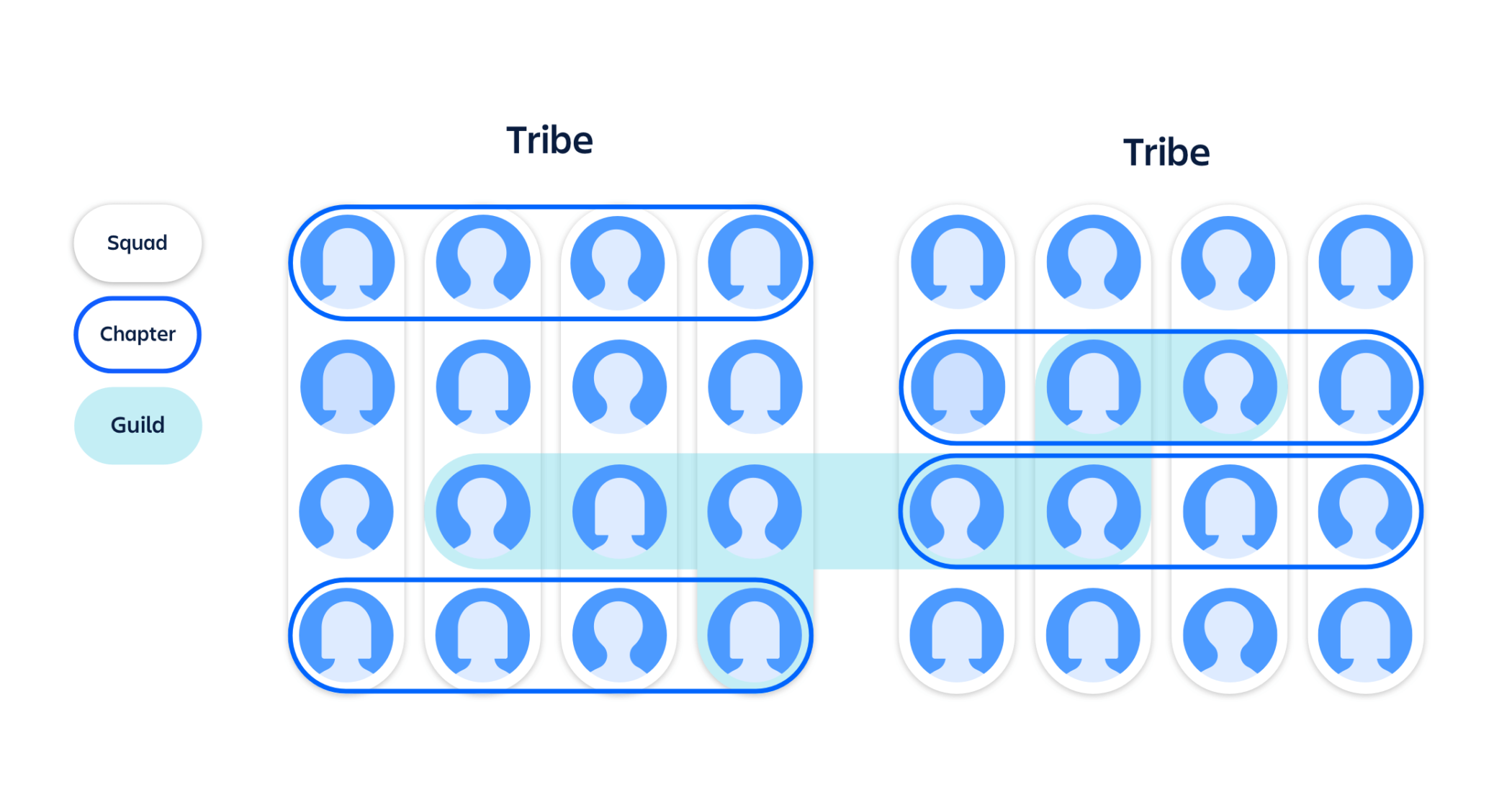
Conducting the sprint planning meeting
It’s time to sit down with your team and start planning. Here’s how you can set up a smooth and productive process.
- Review the sprint goals and confirm the duration of the sprint.
- Review the backlog. Discuss any changes or updates since the last grooming session.
- Discuss capacity and constraints.
- Select tasks from the sprint backlog that align with the sprint goals and team capacity. Ensure each task is well-defined and understood by the team.
- Estimate the effort required for each task. Use techniques like planning poker or relative sizing. Reach a consensus on the estimates to ensure alignment.
- Assign tasks to team members based on their skills, availability, and interest. Distribute tasks evenly to balance workload and maximize productivity.
- Define success criteria. Include specific deliverables and outcomes to be achieved.
- Recap and confirm. Summarize the decisions made during the meeting and confirm everyone’s understanding and commitment to the plan.
We’ve mentioned estimation a few times. So how can you accurately estimate how much time, effort, and money something will take?
Estimation techniques
Estimation techniques are vital for sprint planning in Agile projects. They help teams assess the effort required for tasks. This ensures realistic planning and efficient sprint execution. Let’s explore two popular methods: story points and planning poker.
Story points
Story points represent the required effort to complete a user story. Unlike time-based estimates, story points consider the complexity, the amount of work, and the risks involved. Teams use a relative scale, like Fibonacci numbers (1, 2, 3, 5, 8, 13…), to assign points to stories.
Example
Imagine your team is working on a new login feature. The task includes creating a secure login page, integrating two-factor authentication, and testing user acceptance. Given the complexity and the security aspects, the team might assign this user story 8 story points. This indicates a higher level of effort compared to more straightforward tasks.
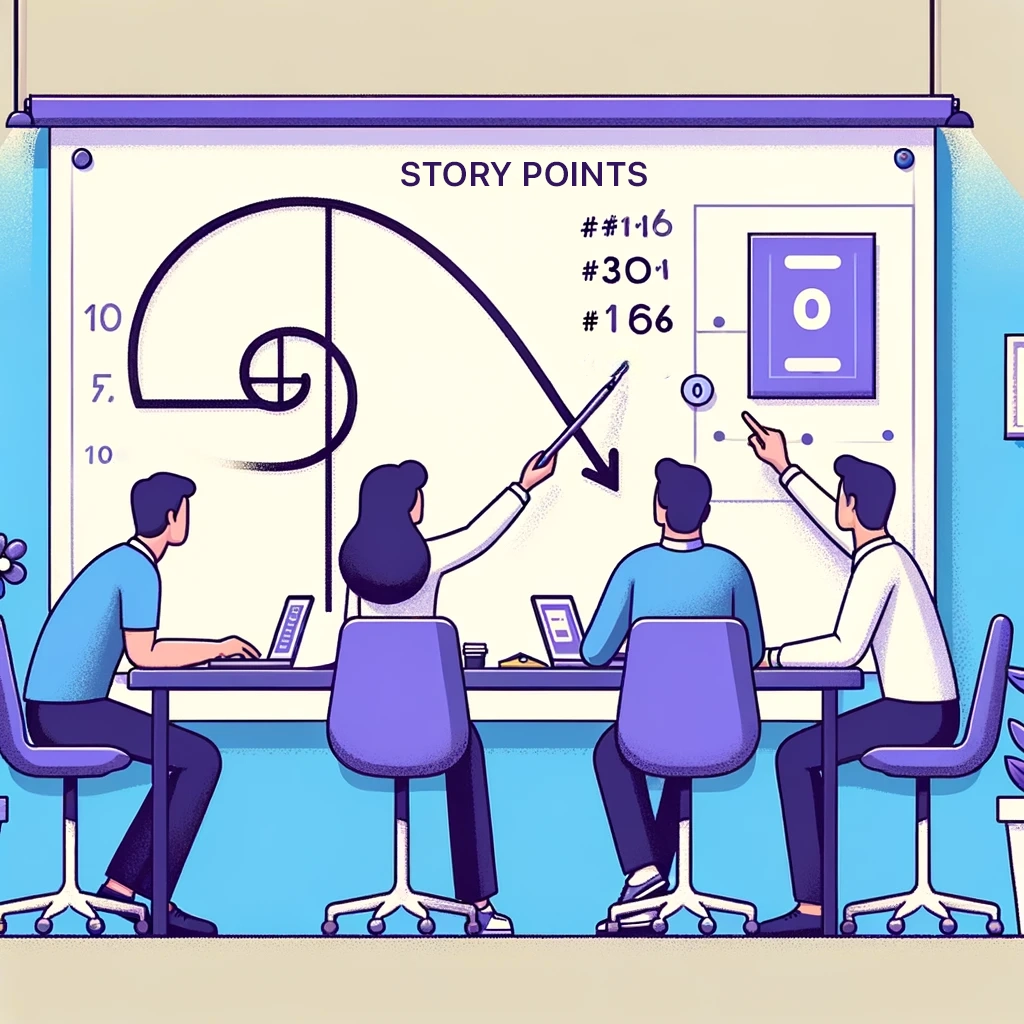
Planning poker
Planning poker is a collaborative and fun way to estimate work. Each team member gets a set of cards with numbers representing story points. Team members select a card representing their estimate for each user story. Then, all cards are revealed simultaneously. If estimates vary widely, the team discusses their reasoning and repeats the process until reaching a consensus.
Example
Your team plans to add a feature allowing users to upload profile pictures. During planning poker, estimates range from 3 to 8 story points. After discussing, the team agrees on 5 story points. They consider the need for image validation, storage considerations, and UI changes.

Three-point estimate
This method uses three figures: the most optimistic, most likely, and most pessimistic estimates. Teams then find the average for a balanced view.
Example
You’re estimating the time to develop a new feature. You might consider:
- The quickest possible time (optimistic)
- The most likely time based on experience
- The longest it could take (pessimistic)
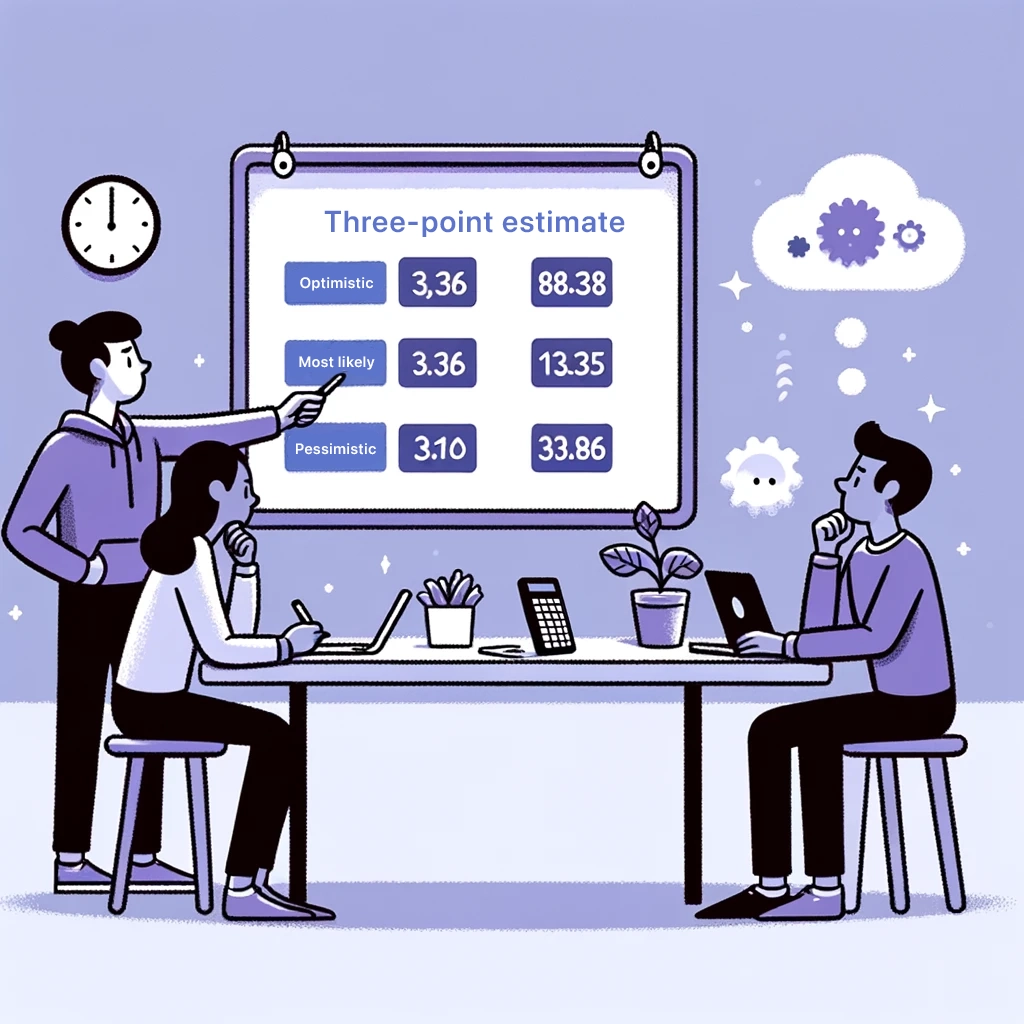
Affinity grouping
Teams group similar tasks together. It helps when you have a lot of items to estimate. You can then assign effort levels to groups instead of individual tasks.
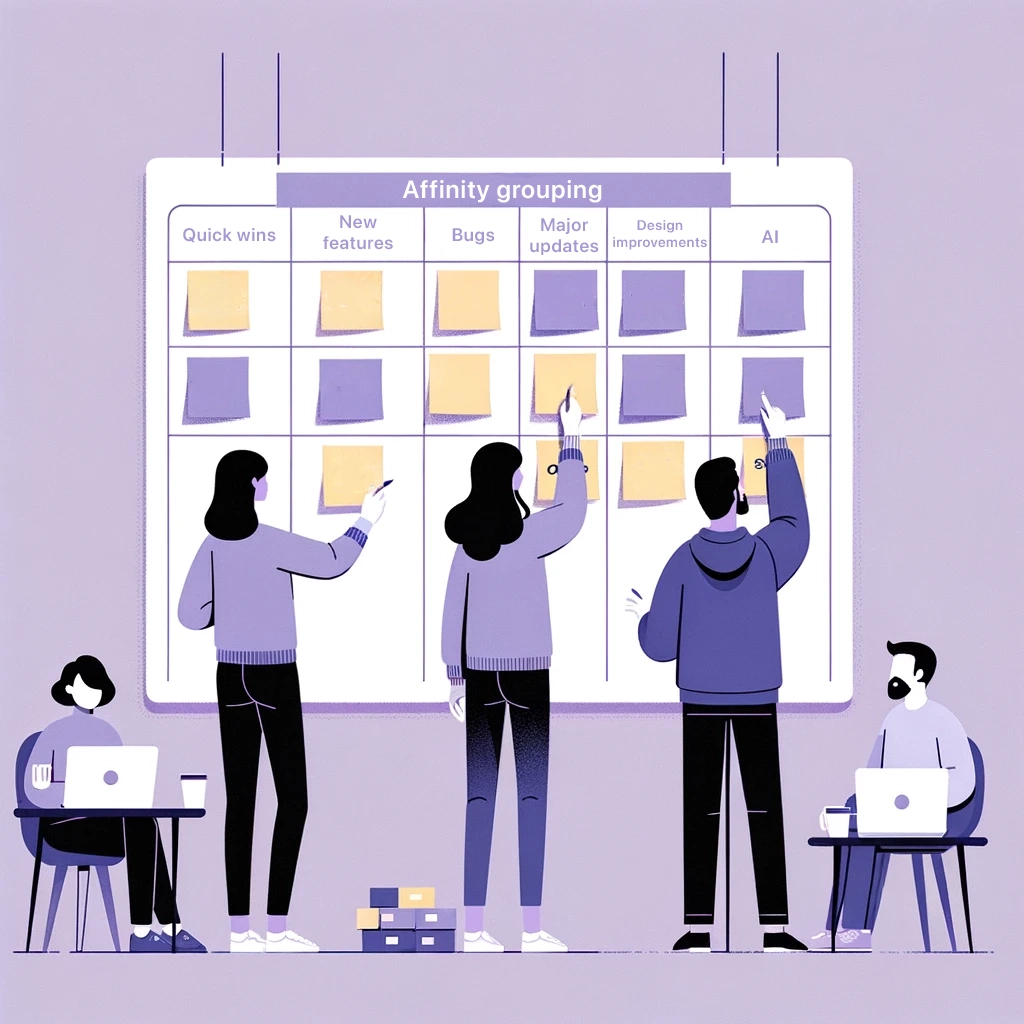
Example
Sorting tasks into groups like “quick updates” and “new features” can help estimate work chunks at a time.
T-shirt sizing
This technique uses size labels (XS, S, M, L, XL) to estimate tasks. It’s suitable for a broad view of task sizes.
Example
Minor fixes might be “S,” while developing a new module could be “L.”

Dot voting
Everyone gets a set number of dots to vote on tasks’ effort. More dots mean more effort.
Example
If a task gets many dots, it’s seen as needing more work, guiding the team on prioritization.
Top-down & bottom-up estimates
Top-down starts with a project deadline and breaks it down. Bottom-up looks at each task to build up a total time.
Example
For top-down, you might allocate weeks to phases. For bottom-up, you’d estimate hours for each small task and add them up.
Help your teams understand each other better and agree on the required effort. This will help you plan better and ultimately have a successful sprint.
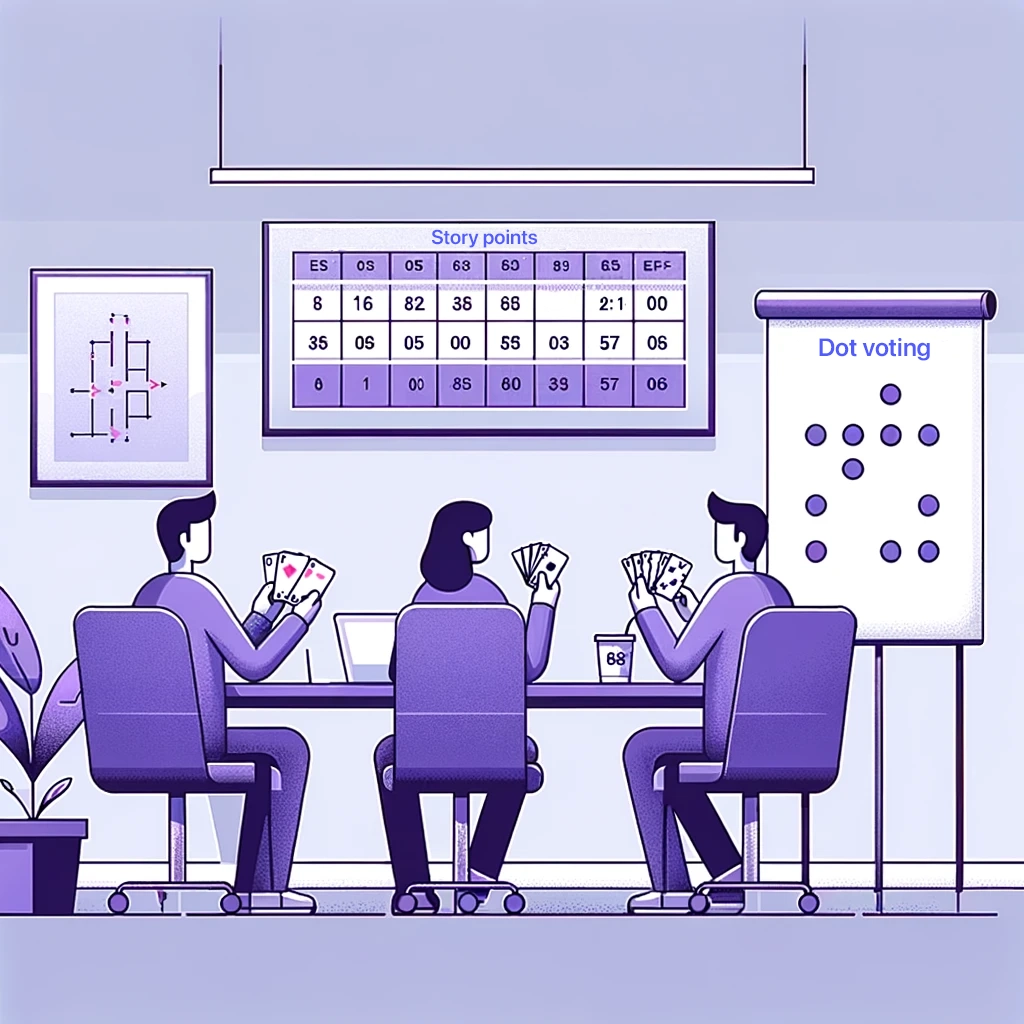
Setting sprint backlogs
Let’s start turning plans into actions.
First, know the difference between product and sprint backlogs.
A product backlog is a list of all things that need to be done.
A sprint backlog is what you’ll actually tackle in the upcoming sprint.
Now, it’s time to create a sprint backlog. Pick items from the product backlog for the next sprint. Think about the sprint goals and what’s realistic. Keep it lean and achievable. This should be easier if you’ve followed the previous sections’ steps.
Example
A web dev team’s product backlog has 50 items. For the next sprint, they choose 5. These are related to the sprint goal: revamping the checkout process. They’ve picked tasks like redesigning the payment page and testing the user flow. This focused list is now their sprint backlog.
By clearly setting a sprint backlog, teams have a roadmap for the sprint. It’s about choosing wisely and setting up for success.
Common challenges in Agile sprint planning
No system is perfect. But knowing common obstacles will help you overcome them. Here are some of them.
Scope creep
This happens when the sprint backlog grows unexpectedly. This is often due to additional tasks being added mid-sprint.
Sticking to a well-defined sprint goal and practicing discipline in adhering to the original plan is essential. The development team should feel empowered to push back against changes that affect the sprint’s scope. This will ensure that any addition is genuinely necessary and beneficial at that time.
Underestimation of tasks
Even with all the techniques we mentioned above, this happens. It leads to overcommitment and potential burnout.
Solution: use historical data from previous sprints to estimate better. Encourage each team member to be open and honest about their capacity and skill set.
Over-optimistic planning
Teams can sometimes be too optimistic about their capacity. This sets unrealistic expectations.
Solution: base planning on past performance. Allow the development team to have a say in what is realistic.
Unforeseen technical challenges
Unexpected technical issues can slow down development and cause delays. For example, a task is more complex than anticipated. This leads to longer development times.
Solution: have contingency plans and be adaptable.
Ambiguous requirements
Not spending enough time on product backlog refinement can create vague and ambiguous requirements. This results in a development team that does not fully understand how to proceed.
Solution: hold regular backlog grooming sessions. Make sure the product owner clarifies any ambiguities before the sprint planning meeting.
Best practices for effective sprint planning
Now that we know what not to do, let’s talk about what you should do instead.
To ensure effective sprint planning, incorporate these proven strategies and best practices.
Before the sprint planning meeting:
- Come with a refined backlog
- Set a clear agenda and roadmap
- Optimize attendance
During sprint planning:
- Start with a product roadmap review
- Present new information
- Share data on target velocity
- Review and assign work
- Reach agreement and understanding
After the meeting:
- Avoid changing sprint goals mid-way
- Check in on your team
- Adapt if necessary
Tools and resources for sprint planning
You’re almost ready to start sprint planning. Let’s go over some tools that can simplify this job for you.
Tara
Tara offers a modern, simplified interface. It’s designed to remove the stress from sprint planning. Tara supports sprint planning, task prioritization, and progress tracking all on one platform. It features automation capabilities for streamlining workflow. You can integrate Tara with Slack, GitHub, and GitLab.
Wrike
Wrike is a collaborative work management software ideal for enterprise-grade projects. Wrike facilitates easy tracking and management of workflow processes. It offers automated systems, real-time alerts, and comprehensive collaboration tools.
ClickUp
Known for its intuitive design, ClickUp is more than a task management tool. It’s an all-in-one productivity platform. It supports billing, invoicing, and time tracking. ClickUp offers various views and statuses for detailed project management.
Jira
Jira (by Atlassian) is a widely recognized platform tailored for Agile teams. It allows you to track projects in real time. You can plan sprints with customizable scrum boards and detailed reporting tools.
Teamwork
Teamwork helps manage team collaboration and task organization. You can outline tasks and prioritize work. There’s also built-in compliance tracking.
Asana
Asana helps you with project management, task assignment, deadline specification, and collaboration. It offers workflow builders, project templates, and customizable dashboards.
Canny integrates with ClickUp, Jira, and Asana to help you manage projects and products together. It’s a great enterprise feedback management system to compliment your Agile workflow. Check it out.
Looking for more Agile and sprint planning resources? Check out the following:
Let’s wrap up everything we’ve learned.
Conclusion: Agile sprint planning done right
We’ve taken quite the journey through Agile sprint planning. Agile is all about moving fast and staying flexible. Sprint planning is when the team gets together to plan their next adventure.
Sprint planning isn’t just about assigning tasks. It’s about aligning visions, setting clear objectives, and ensuring everyone is on the same page. It’s a time for reflection, adjustment, and, most importantly, collaboration. Sprint planning can transform a group of individuals into a cohesive team when done right.
Here’s the takeaway: sprint planning helps teams do great work together. Try it today!






